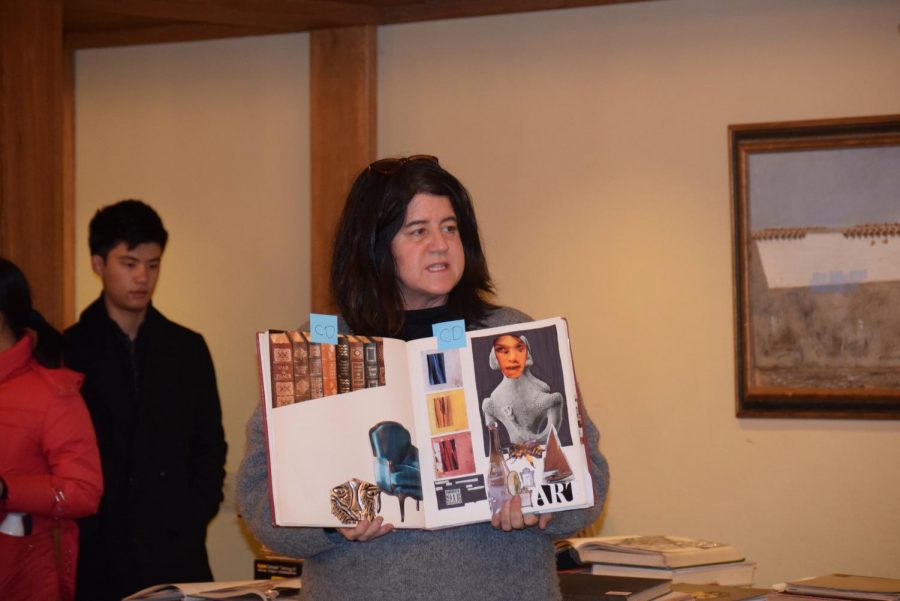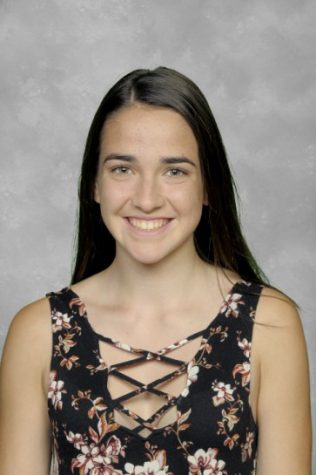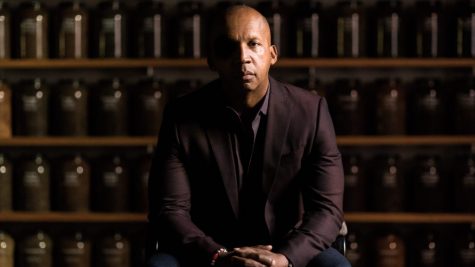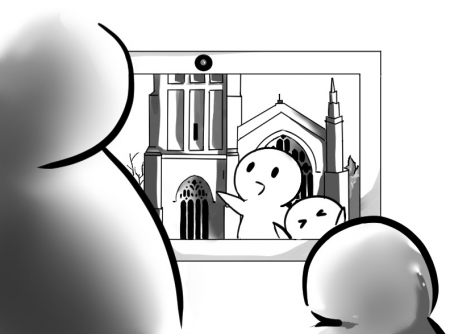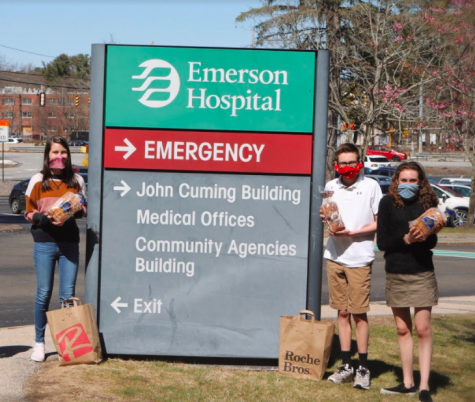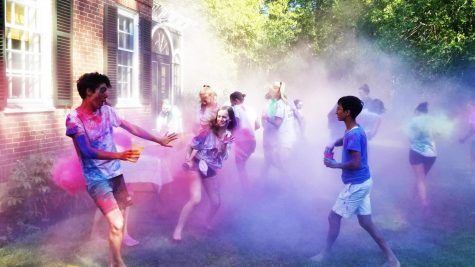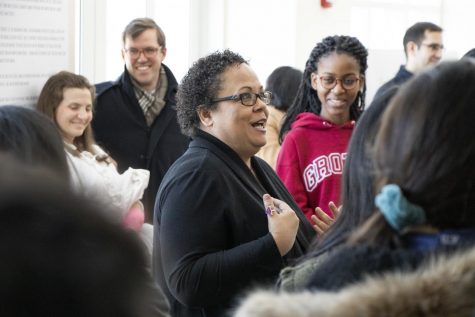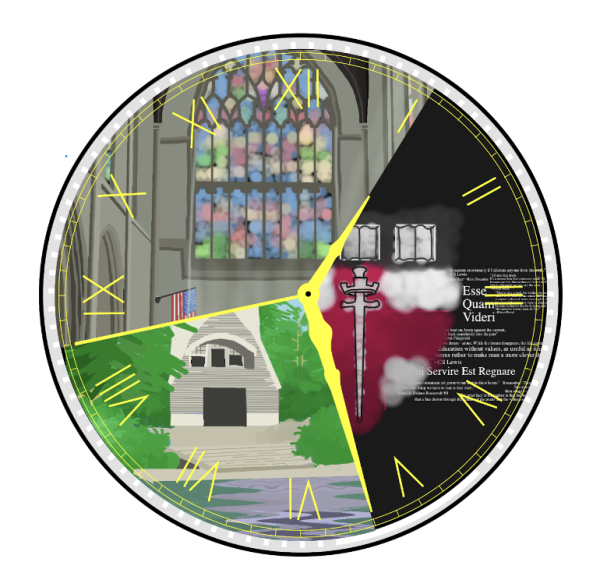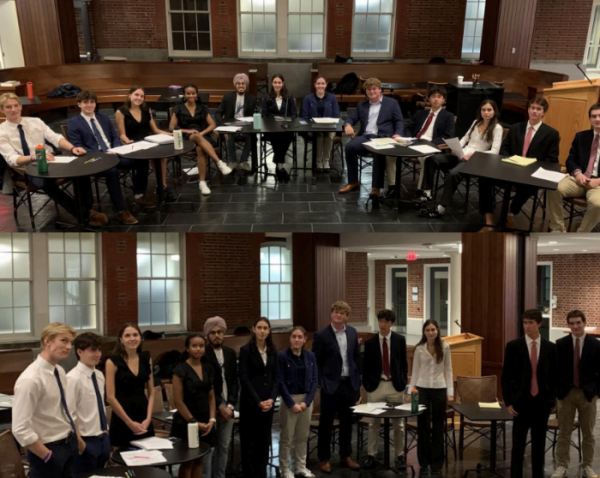Elizabeth Turner Visits the Circle as Mudge Fellow
Each year, one outstanding artist is offered the opportunity to spend a week on campus through the Mudge Fellowship, a one-week on-campus teaching experience. During their residence, the artist has the opportunity of an exhibition in the Dining Hall’s Brodigan Gallery, studio workshops, and interdisciplinary collaborations with students. In order to be offered the fellowship, not only must their art be exemplary, but also the message behind it.
This year’s artist was Lorna Turner, a practicing graphic designer, printmaker, photographer, and adjunct faculty at three different universities in Los Angeles, CA. A family friend of Tiffany Doggett, coach of the girls varsity crew and mother to Verity Lynch ’17, Finn Lynch ’19 and Phoebe Lynch ’22, Ms. Turner was selected because her unique, collaborative, and worldly style inspired the Visual Art Department, which is “interested in further investing our value that the Christopher Brodigan Gallery is a space for community and collaboration,” explained art teacher Jennifer Ho.
Ms. Turner’s work certainly inspires that by using unique mediums inspired by the world around her. Her exhibition “Disappearing Messages” includes photographs of discarded furniture, travel quotes, prints of old journals from her parents, and letterpress prints with typography design. “Part of bringing Lorna onto campus is to break the mold of fine art in galleries since she works with a variety of materials, and mixes mediums to illustrate her world,” Ms. Ho said. “When you look at Lorna’s work, you realize the places or objects so commonly overseen, and how beautiful they are.”
Of course, something so beautifully unique doesn’t come without a journey. Her adventure with art was “a winding road for sure,” Ms. Turner said. She started with an interest in architecture, but, while an undergraduate student at Ohio Wesleyan University, she was given a camera and “the obsession with seeing through the viewfinder began,” she said. She was drawn to “somewhat abstract scenes found in the micro” such as the sides of rock walls, that formed tiny landscapes.
After tiny landscapes, Ms. Turner found a new niche: recording signage. “Sign me up for a long road trip to an unfamiliar place, and I become engrossed searching the buildings for ghosted messaging, and the storefront signage and the collection of typefaces/fonts used to feature the business,” she said. Her favorite subjects are small towns: in her exhibition in the Dining Hall lobby, she features many photographs with typography that is difficult to understand, as well as abandoned and decaying buildings. She is a self-proclaimed “old soul” and likes to find what is “falling apart, overgrown,” or abandoned. “There is a history in that decay,” she said, that is “not understood on first glance.”
Photography, however, is certainly not her only love: she also loves letterpress and graphic design. The works in her exhibit pull from many of these: she has a series of digital prints called “Travel Postcards” that uses lines and particles to create an abstract visual somewhat reminiscent of an outdoor scene and a series of wooden letterpress prints called “Red, Black, Blue.” “I love that over the multiple passes the words become less readable and more like a painting,” she says.
This effect was certainly not lost on Lilly Gordon ’21, who went to see the exhibit in the Brodigan Gallery on January 16. “I thought it was really interesting how she used words in so many different ways,” Lilly said, “and made them so much more.”
Even though Ms. Turner is clearly incredibly talented and creative, she, like anyone else, has to juggle her passion with the rest of the things she has going on. “As a college professor, I do not often get to step back and see where I have been with my creative explorations,” she said. “It is tough wearing many hats, wanting to be an artist while juggling the complexities of life as a graphic designer and a college professor.” If there’s anything this experience has taught her, however, it’s the importance of creativity in her life, particularly in solidifying her views of her own life and work. “In the exhibition, it confirms that I am super consistent with my themes, nostalgia, disappearing typographic messages, storytelling through collaging,” she said.
Not only is Ms. Turner using her art as a personal journey for the self, but she hopes that she was able to share what she’s learned with the Groton community during her residency. She hopes the students learned “that you can explore your creative ideas through many different mediums: you do not have to do just photography or only work in paints, you can explore your ideas in many materials.” She considers this exploration to be a very important part of growth, saying “there is a lot of learning while investigating what you do not typically use.”
The project she completed at Groton offered students this opportunity by giving them old books to create new messages in. Students experimented with many different methods for manipulating the pages including drawing and collaging. “Kind of like the title of the exhibition, [we are] ‘disappearing’ the original message and putting in our own,” she explained. “You all have such great stories about your life to date, and personal experiences. I am super lucky to have engaged with this dynamic community. A previous employee, and now a good friend once said I am the ‘ultimate adventure student,’ a Curious George, and I’ll take it. For all of you reading this article, I encourage you to, ‘Go, See, Do’!”


